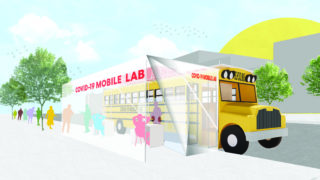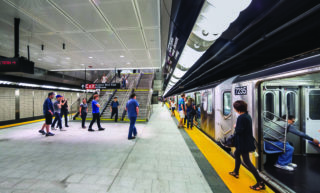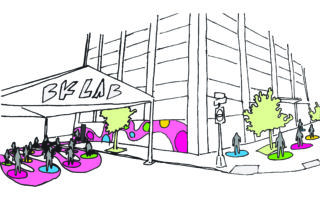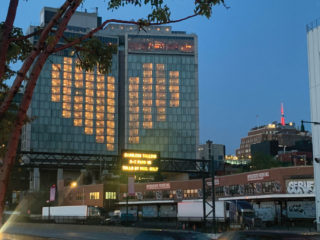
As our understanding of the machinations and mysteries of coronavirus evolve, one of the pathogen’s striking features is how it targets the weakest among us. Indeed, it’s hard to imagine a recovery that doesn’t focus, in large part, on helping these vulnerable populations.
The toll of the virus on cities, and the corresponding response from local leaders, may follow a similar logic. As it becomes clear that COVID-19 is hitting low-income, marginalized populations more—highlighting weak spots in social safety nets and the transportation systems that support essential workers—it becomes imperative that cities like New York plan to bounce back in ways that confront these issues head-on. “Leading cities are doing what’s needed now to create a safe and equitable environment,” says David Miller, director of international diplomacy for C40, a coalition of global cities fighting climate change. “Cities that are focused on using this opportunity to become more resilient and lower carbon will have far better health and economic outcomes.” The clarifying nature of a major crisis offers blueprints for cities to not just survive, but improve. Different places will come out of coronavirus shutdowns and shelter-in-place orders at different points, and with vastly different resources.
“The essence of New York City is that it’s the one city in North America that has a truly robust public transit system,” says Rob Goodwin, architectural design director for the New York office of Perkins and Will. “Now that we can’t use it in the same way, what does that mean for New York as an urban space?” After contending with the worst outbreak in the United States, New York City still finds itself with familiar challenges: inequalities concerning transit access, an underfunded public transit system, and a pedestrian safety crisis. But like cities across the globe, it also must contend with new hurdles: recreating a vibrant public square, restarting a moribund economy, and reimagining public transit at a time when riders fear enclosed, crowded spaces. “The worst-case scenario for post-COVID responses is that everyone is afraid of transit and jumps back in their personal cars, and congestion explodes,” says Allison Arieff, a New York Times columnist and the editorial director of SPUR, a Bay Area urbanism think tank.
Many of the early and effective reactions—including speedy policy shifts and low-lift tweaks to infrastructure—exemplify tactical urbanism, a movement that emerged a decade ago that promoted low-cost, temporary changes to cities. But they all look beyond the pandemic to try and reframe what city life and transportation can be.
Few cities have revolutionized their transit system as quickly and concretely as Paris under the leadership of Mayor Anne Hidalgo. The socialist mayor, elected in 2014, has turned the City of Lights into a worldwide cycling capital with her extensive Plan Vélo, building miles of bike lanes, encouraging the use of electric bikes, pedestrianizing streets, and upgrading existing transit, all packaged as a program to improve quality of life and economic access. Now, with coronavirus creating a need for even more space for walking and cycling, Hidalgo has accelerated her plans to establish more car-free space in Paris, introducing just over 400 miles of TempoRER vélo, or “corona cycleways.”
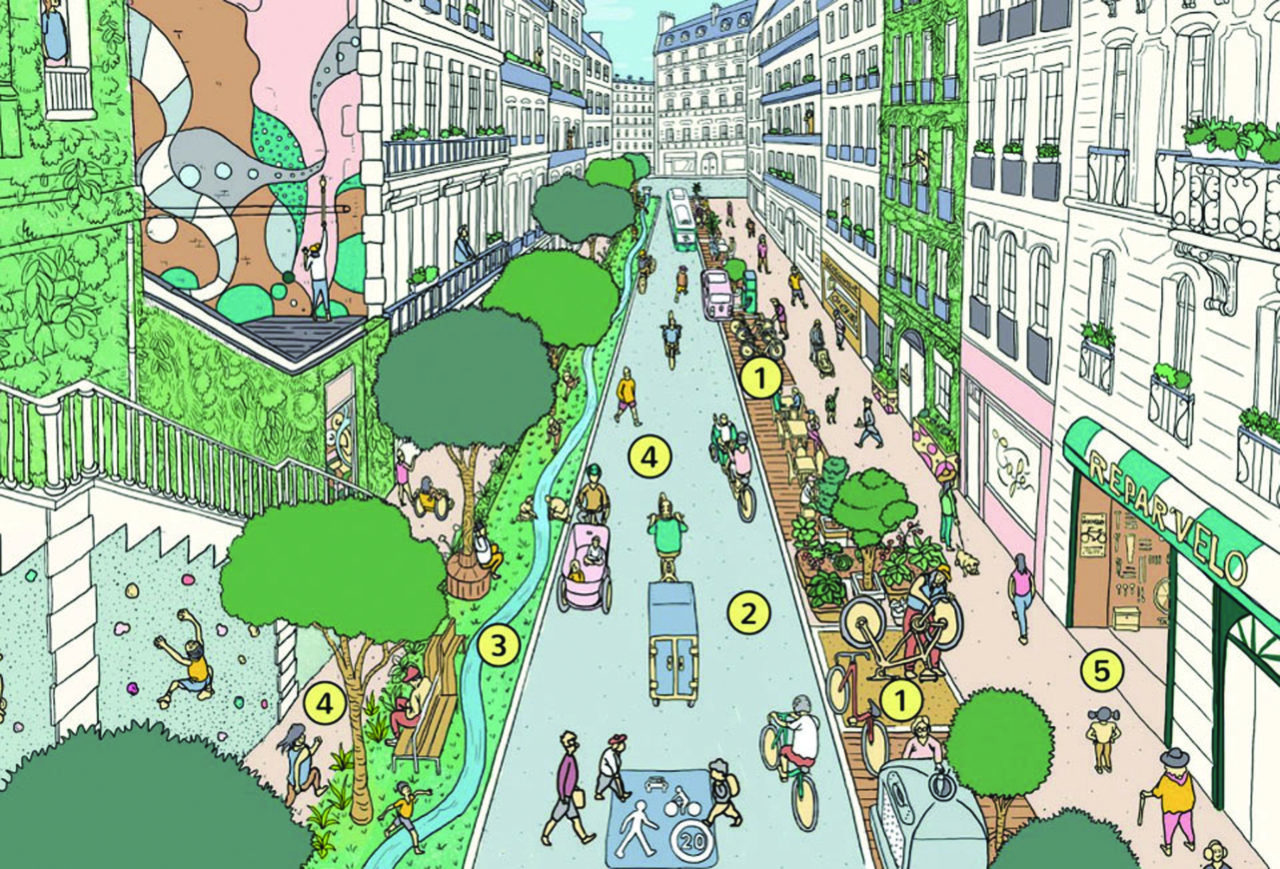
“Public transit ridership is down, and cities such as Paris, by their nature, can’t function without rapid transit,” Miller says. “Right now, you need to build a walking and cycling network because people need to be mobile without being forced to drive. Without transit and these other options, everyone will just jump back in a car when coronavirus is more contained, and it’ll shut down the city.”
This template of turning space for cars over to pedestrians and cyclists and expanding green infrastructure has been adopted, in lesser form, by other cities, such as London. While Paris’s coronavirus response is, in many ways, the acceleration of a detailed, multiyear investment, it only requires political will and a few coats of paint to quickly alter city transit, says C40’s Miller. New York City’s 14th Street Busway, which quickly turned a main road into a bus-first street, has shown how quickly changes can be made to benefit buses. Why not do the same for bikes on a larger scale?
In Milan, Italy, a previous epicenter of the virus, city leadership has also focused on preventing pollution and car traffic from returning to post-pandemic streets, creating an integrated transportation network to cut down pollution (which dropped 75% at the apex of the pandemic) and keep cars away from the city center. A cornerstone of this strategy, the Strade Aperte plan, is bolstering business by expanding sidewalks for commercial activity. While New York doesn’t lack walkable commercial corridors, cramped small businesses and restaurants need more room to be able to operate amid the need for social distancing. Milan Deputy Mayor Marco Granelli explicitly says the investment in making more room for shops on busy streets such as Corso Buenos Aires is about creating an economic advantage for his city. “Milan’s thinking is focused on neighborhoods, and while the health and climate benefits of such a plan need to be emphasized, the economic arguments are very powerful,” says Miller. “Repurposing streets to enable active transportation, on a neighborhood basis, is a powerful tool for small business.”
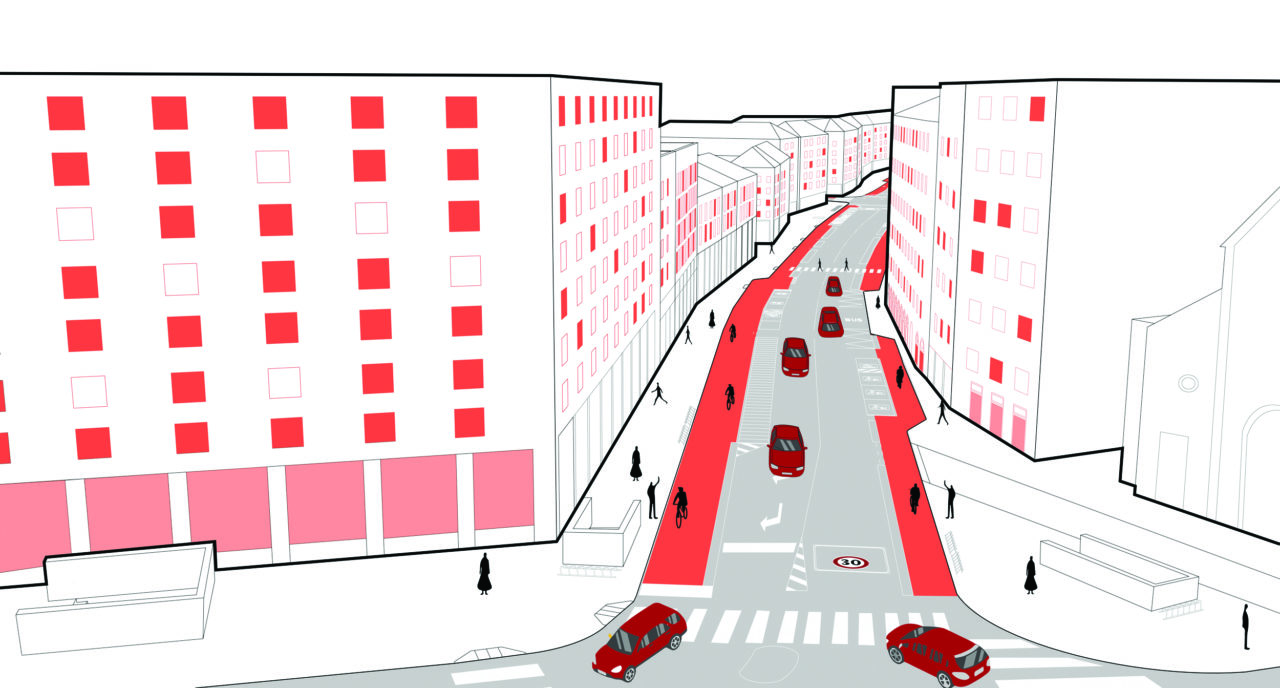
Melbourne, Australia, is also expanding a similar program, creating what planners there have called a “20-minute city.” The concept, which was introduced in 2017 but has gotten renewed attention due to the pandemic, is to alter planning, land use, and transit to be super-localized so that every need of a resident can be met within a 20-minute walk or bike trip. For many New Yorkers, this lifestyle is already a reality and one of the main reasons they picked their particular neighborhood. However, equal access, particularly when it comes to jobs and greenspace, should be something all New Yorkers enjoy. (In 2015, New York University researchers found neighborhoods with limited access to transit have a 50% higher unemployment rate.)
Hand in hand with the neighborhood-first focus of plans like those unfolding in Melbourne and Milan is the comprehensive nature of the transit vision; ideally, every part of the city is accessible, both within itself and to other parts of the city. SPUR’s Arieff says these kinds of large-scale car-free infrastructure pushes, similar to the bike booms in cities such as Copenhagen, Denmark, offer riders the safety, peace of mind, and ease that changes culture. “A lot of people underestimate the importance of safety,” she says. “The network needs to be big enough to make it feel like you’re not the one fighting for your place on the road.”
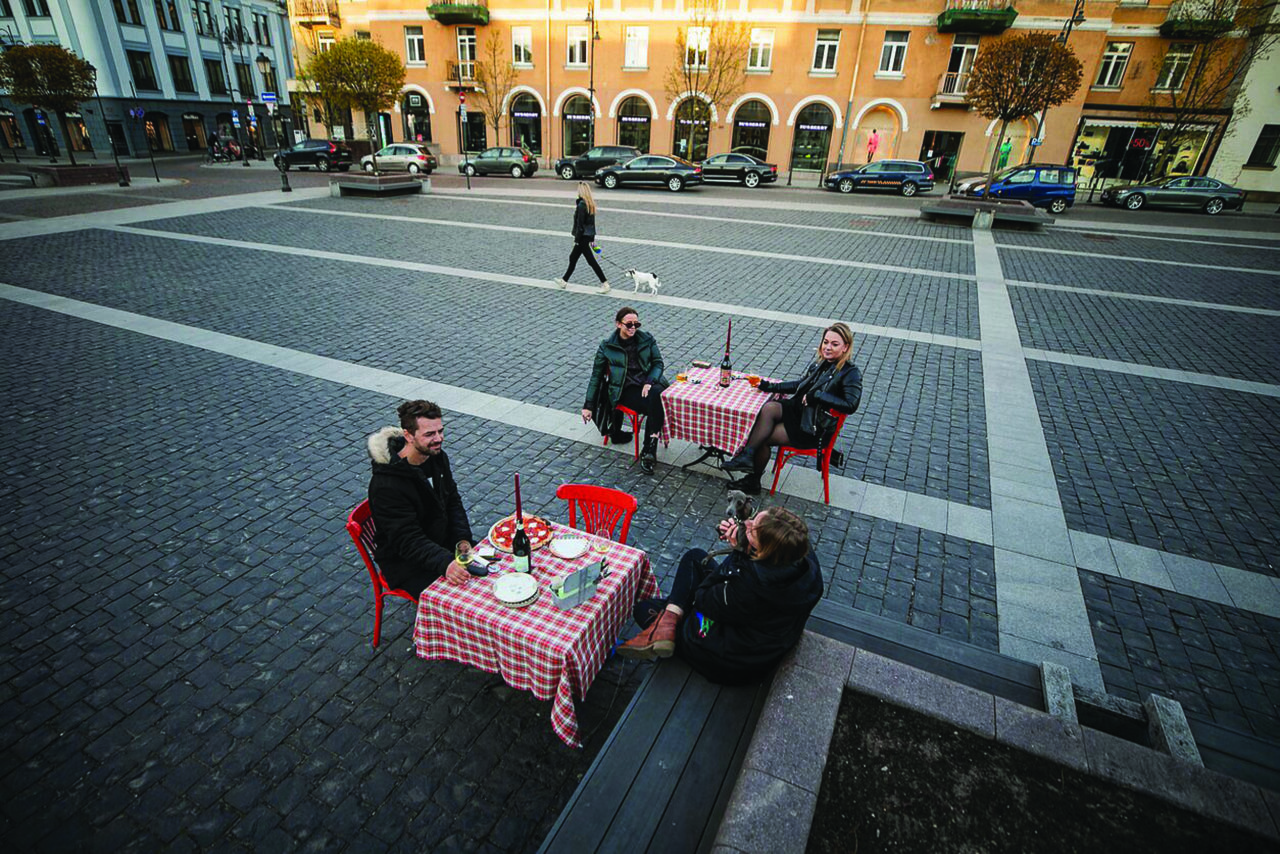
Other cities are experimenting with pilot programs that provide even more space for local businesses. In Lithuania, the capital city of Vilnius plans to turn over a wide swath of street space, including public squares, to restaurants to create massive, open-air cafés for the era of social distancing. This plan stands in sharp contrast to the approach currently being taken in U.S. cities, says Alissa Walker, urbanism editor at Curbed, which tends to focus on recreation as the reason to open streets. “The most critical thing right now is people want to go to work,” she says. “Vilnius’s example shows we can close streets and pump money back into the economy. That’s going to help a lot more than closing a residential street so someone can exercise. If you really want to make systemic changes in transportation, we need to find better ways to talk about the changes.”
Arieff sees Vilnius as a textbook example of tactical urbanism. The open-air bazaar approach isn’t perfect, especially when the weather doesn’t cooperate, and won’t single-handedly save the local restaurant industry. But it will immediately provide something nearly everyone craves—a sense of community—and help pay for itself by helping restaurateurs. It also reinforces public space as a public good. In similar fashion, Goodwin and his Perkins and Will colleagues have designed a system to turn school buses into coronavirus test- ing and tracing centers, utilizing clever modular design and a surfeit of street space to provide much-needed healthcare infrastructure. “It’s a way to reintroduce public life that so many other places can copy, and I think it could really be transformational and stick around,” Arieff says.
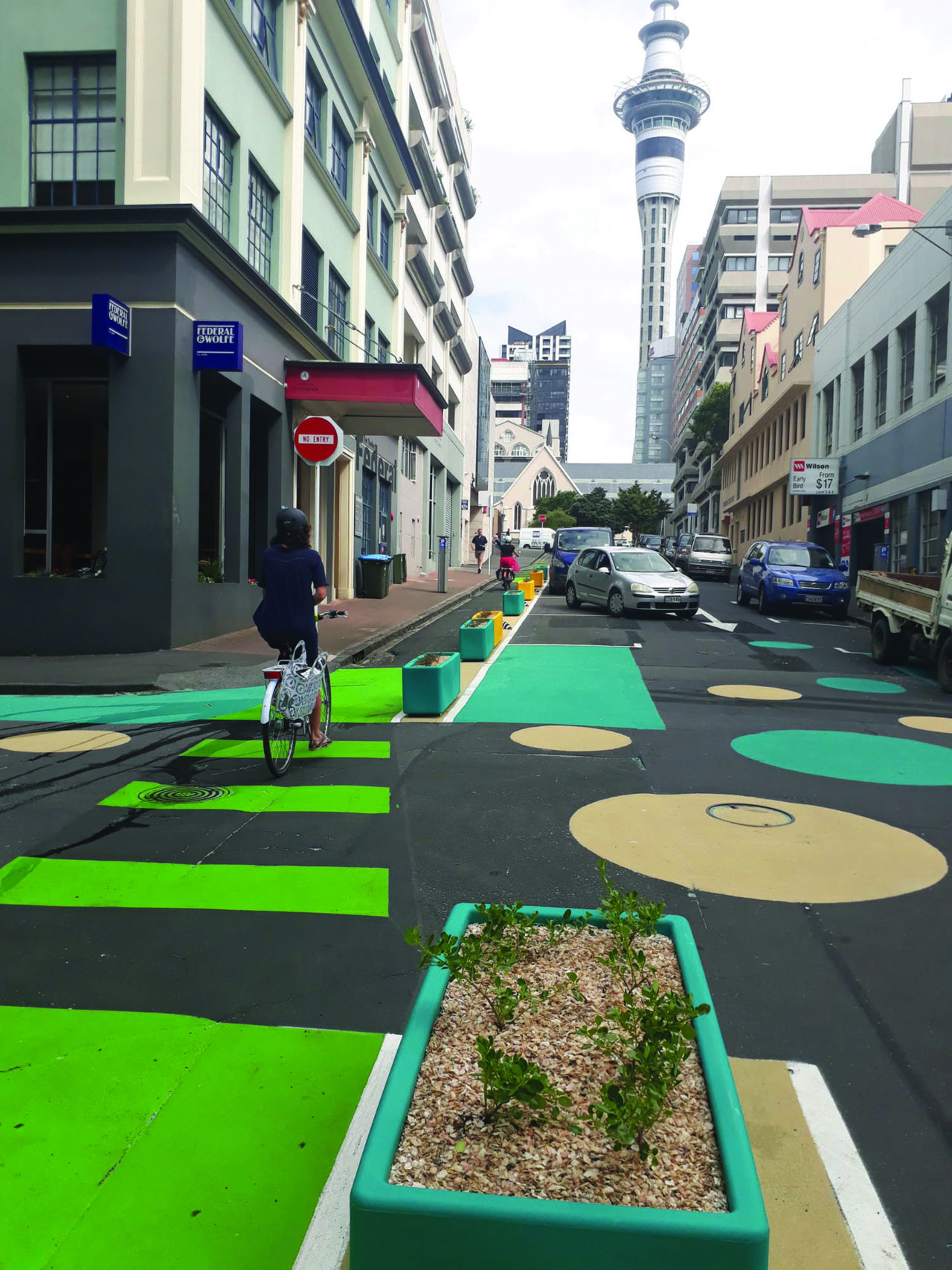
In similar fashion, New Zealand launched Innovating Streets for People, a $7 million fund, to create safer streets and more livable places as part of the nation’s overall COVID-19 response. Cities can apply for grants to finish placemaking projects, such as widening curbs or painting new bike lanes, making tactical urbanism a de facto government policy. “There are plenty of examples—from the way Curabita, Brazil, transformed its bus system, to New York City, where they turned Times Square from a traffic jam into a place for people—that show cities taking advantage of quick, affordable opportunities,” says C40’s Miller. “I’m very optimistic about the success of these measures to quickly and inexpensively change public spaces.”
By dedicating more street space to pedestrians, cyclists, and businesses, cities will eventually have to reckon with larger transit questions, notably public transit’s crisis of trust and ridership. According to Regina Clewlow, an analyst and founder of Populus, a transit data consultancy, numerous surveys have shown that since the spread of coronavirus, many riders aren’t comfortable using buses and trains. In New York City, where so many workers traditionally depend on transit, this will become a crisis: ridership on subways and buses has been down 90% since mid-March, according to the Metropolitan Transit Authority. Clewlow believes that micromobility—specifically bicycle sharing, electric scooters, and electric bikes—can offer car-free options to former transit riders, especially for the great proportion of trips that are less than three miles, which make up 45% of total trips taken in the U.S.
Leaders in Berlin, Germany, feel the same way and have responded by making the first 30 minutes of any ride on their bike-share system free to encourage more cycling. The German capital’s bike-share support shows another long-term benefit to these ad-hoc responses: new ways to improve equity and access to jobs. That’s ultimately what can make all these changes work politically and become permanent.
“The status quo left folks behind,” says Benito Perez, a transit official and member of Smart Growth America. “The temporary changes and solutions you’re now seeing in city streets highlight the need to rethink public space design to create a more equitable, multimodal, and complete system.”
These policy solutions may be improvisations, but the best can be viewed as investments towards a better transit network for all, one that improves transportation access and, in effect, boosts economic opportunities and mobility. After all, while most people just want to go back to normal, they probably wouldn’t mind if that return didn’t include traffic jams, congestion, and air pollution.
Patrick Sisson (“Movement Politics,” “Street Smarter”) is a journalist and Chicago expat living in Los Angeles. His writing, which also explores music, art, and technology, has been published by the Verge, Vox, Pitchfork, Curbed, and Wax Poetics. He is the author of This is Chicago, a book about the history of design and designers in Chicago, published in 2015.










